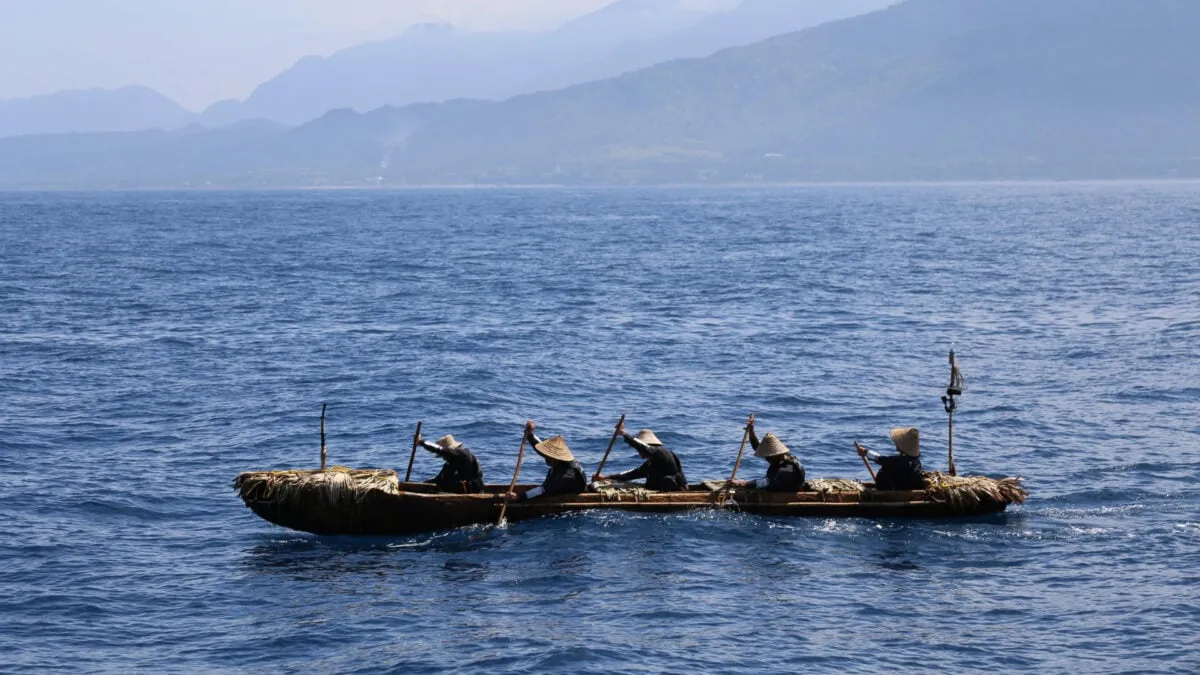
Recent archaeological studies suggest that humans first arrived on the Ryukyu Islands, located off the southwestern coast of Japan, between 35,000 and 27,500 years ago. However, the exact methods of their arrival remain unclear, particularly considering that they would have had to navigate one of the strongest ocean currents on the planet. To explore this longstanding mystery, a team of scientists embarked on a unique project: they attempted to replicate the ancient Paleolithic voyage themselves.
Utilizing replicas of tools that were prevalent in the Japanese Archipelago during the Upper Paleolithic period (approximately 50,000 to 10,000 years ago), researchers constructed a dugout canoe. They set out to cross the 68.4-mile-wide (110-kilometer) strait that separates Taiwan from Yonaguni Island, facing the formidable Kuroshio current. Remarkably, the team completed this voyage in about 45 hours, providing a potential glimpse into how ancient people from present-day Taiwan might have reached the Ryukyu Islands tens of thousands of years ago.
The researchers noted, “Our 7.5-meter-long dugout, crafted with edge-ground stone axes, proved to be both speedy and durable enough to traverse this strait.” Their findings, published in the journal Science Advances, support the notion that early humans developed functional boats, such as dugouts. However, they also emphasized that this type of sea travel was feasible only for skilled paddlers possessing advanced navigational techniques.
One of the significant hurdles in understanding ancient maritime activities is the lack of surviving artifacts. Prehistoric watercraft made from organic materials like wood have largely disintegrated over time. Consequently, researchers must rely on experimental archaeology to glean insights into how ancient peoples may have accomplished their feats. By physically replicating historical endeavors in a controlled environment, scientists can explore plausible methods used by our ancestors.
Since 2013, Yousuke Kaifu, an anthropologist from the University of Tokyo, and his co-authors have been investigating how to reach the Ryukyu Islands in a manner reminiscent of the Paleolithic era—without the aid of modern navigation tools like GPS or compasses. Before achieving their successful crossing in 2019, the team experimented with different designs, including reed-bundle and bamboo rafts. Unfortunately, those attempts failed to navigate the challenging Kuroshio Current.
The breakthrough came with a canoe crafted from a hollowed-out and polished Japanese cedar tree, featuring a fire-charred interior. This vessel was capable of carrying five crew members. The researchers stated, “Given the absence of archaeological remains of Pleistocene watercraft, we narrowed down the possible Paleolithic seagoing craft by referencing Holocene archaeological and ethnographic records, considering material availability, and assessing the technological limitations of the time.” They also aimed to understand the travel time, effort required, and other realities associated with Paleolithic ocean crossings for the first inhabitants of the South Ryukyu Islands.
To further their research, the team developed computer models that simulated the conditions faced during a crossing in the Late Pleistocene. These simulations indicated that the success of the prehistoric journey depended on several factors: the starting point (preferably calm bays), directional strategy (initially paddling east-southeast, then northeast), and navigational skills (using celestial bodies for guidance).
Moreover, the team's numerical simulation study suggested that such a canoe could have also traveled from a northern departure point in Taiwan (Taroko) to Yonaguni Island, across both modern and Late Pleistocene oceanic conditions. The researchers concluded, “Paleolithic people are often regarded as ‘inferior’ due to their perceived ‘primitive’ culture and technology. In contrast, our work highlighted their extraordinary achievements using the rudimentary technology available to them at the time.”
This groundbreaking research not only sheds light on the ancient seafaring capabilities of humans but also challenges prevailing notions about the ingenuity of our ancestors.